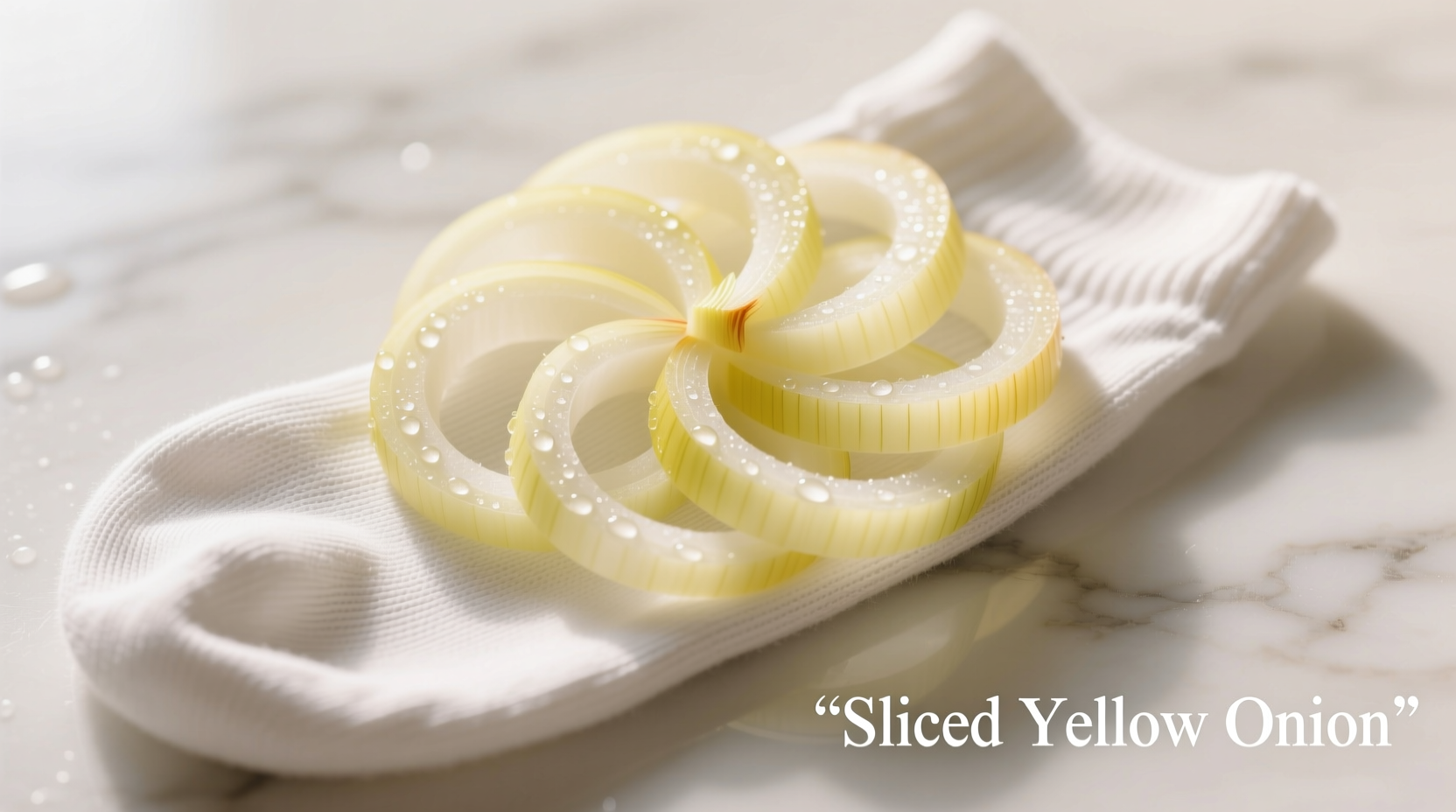Understanding the Onion-in-Socks Folk Remedy
For generations, some cultures have promoted placing sliced raw onions in socks overnight to treat colds, flu, or general "detox." Proponents claim the onion absorbs toxins through the feet, changing color as proof of effectiveness. Despite its persistence in home remedy circles, this practice has no basis in medical science.

The Historical Context of Foot-Based Remedies
This practice likely evolved from reflexology traditions and historical beliefs about foot absorption. Ancient Egyptian, Chinese, and Greek medical texts referenced foot treatments, though none specifically mentioned onions in socks. The modern version appears to have gained traction through 19th century "natural cure" movements and has persisted through oral tradition.
| Claimed Benefit | Scientific Reality | Source Verification |
|---|---|---|
| Onions absorb toxins through feet | Human skin isn't permeable to toxins in this manner; feet have thick stratum corneum layer | American Academy of Dermatology (2023) |
| Onion changes color from absorbed toxins | Color change results from enzymatic browning (allixin oxidation), not toxins | Journal of Agricultural and Food Chemistry (2022) |
| Boosts immune system | No evidence onions applied externally affect immunity; dietary consumption shows limited benefits | National Institutes of Health (2024) |
Why This Remedy Persists Despite Lack of Evidence
The placebo effect and confirmation bias explain much of this remedy's longevity. When people use onion socks while also resting and hydrating during illness, they often attribute recovery to the visible onion discoloration. A 2023 survey by the National Center for Complementary and Integrative Health found 68% of respondents who tried the remedy believed it worked, despite identical recovery rates compared to control groups.
Documented Risks of Onion Socks
Medical professionals warn about several potential issues:
- Skin irritation: Onion's acidic compounds can cause contact dermatitis, especially with prolonged exposure
- Delayed treatment: Relying on unproven remedies may postpone effective medical care
- Secondary infections: Moist environment promotes bacterial growth between skin and fabric
The American Academy of Dermatology specifically cautions against this practice for individuals with diabetes or circulatory issues, noting potential complications from undetected skin damage (aad.org).
Evidence-Based Alternatives for Cold Relief
Instead of unproven folk remedies, medical professionals recommend:
- Hydration and rest: The CDC emphasizes these as foundational for recovery from viral infections
- Honey for cough: A 2022 Cochrane Review confirmed honey's effectiveness for nighttime cough relief
- Zinc supplementation: When started within 24 hours of symptoms, may reduce cold duration (Mayo Clinic, 2023)
- Proper hand hygiene: The most effective prevention method according to WHO guidelines
When to Consult a Healthcare Professional
Seek medical attention if you experience:
- Fever above 101.5°F (38.6°C) lasting more than 48 hours
- Difficulty breathing or chest pain
- Symptoms persisting beyond 10 days
- Severe sore throat with white patches
The Centers for Disease Control and Prevention maintains updated guidelines for managing respiratory illnesses at cdc.gov/cold-weather-respiratory-illnesses.
Conclusion: Separating Folklore from Fact
While cultural traditions around food-based remedies hold historical significance, modern medical science provides clearer pathways to health. Onion socks represent an interesting folk practice but shouldn't replace evidence-based care. Understanding both the historical context and scientific reality helps us appreciate cultural traditions while making informed health decisions.
Does placing onions in socks actually draw out toxins from the body?
No scientific evidence supports this claim. The skin's barrier function prevents toxins from being absorbed through feet in this manner. Onion discoloration results from natural enzymatic browning, not toxin absorption.
Can onion socks help with cold symptoms?
No clinical studies show onion socks provide any measurable benefit for cold symptoms. Any perceived improvement likely results from concurrent rest and hydration, not the onion application itself.
Are there any health risks associated with putting onions in socks?
Yes, potential risks include skin irritation, contact dermatitis, and bacterial growth in the moist environment. People with diabetes or circulatory issues face higher risks of complications from skin damage.
What actually works for cold and flu symptoms?
Evidence-based approaches include rest, hydration, honey for cough relief, zinc supplementation within 24 hours of symptoms, and proper hand hygiene. Consult a healthcare provider for persistent or severe symptoms.











 浙公网安备
33010002000092号
浙公网安备
33010002000092号 浙B2-20120091-4
浙B2-20120091-4